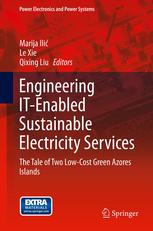

Most ebook files are in PDF format, so you can easily read them using various software such as Foxit Reader or directly on the Google Chrome browser.
Some ebook files are released by publishers in other formats such as .awz, .mobi, .epub, .fb2, etc. You may need to install specific software to read these formats on mobile/PC, such as Calibre.
Please read the tutorial at this link: https://ebookbell.com/faq
We offer FREE conversion to the popular formats you request; however, this may take some time. Therefore, right after payment, please email us, and we will try to provide the service as quickly as possible.
For some exceptional file formats or broken links (if any), please refrain from opening any disputes. Instead, email us first, and we will try to assist within a maximum of 6 hours.
EbookBell Team

5.0
30 reviewsSustainable energy services to customers - a balanced choice and coordination of energy generated by traditional and alternative sources - are the subject of this new innovative book. The myriad factors involved in modeling an effective sustainable power system are overwhelming. The “Green Islands” project represents a decade of work by over a dozen researchers who have developed a model designed to utilize the potential of distributed clean resources. The key is the proper use of Information Technology (IT). Sited on two islands in the Azores, the project developed the model of careful forecasting of demand and supply, down to the minute, coordinating the output of conventional power plants, wind energy, fly wheels, hydroelectricity, demand reduction, and even plug-in electric vehicles to take full advantage of the clean resources available. The energy contingencies of the remote islands are not unique. The issues of integrating promising clean technologies, such as wind, into a complex power grid are challenging in geographically far-flung, island-scale, power systems.
Model-based sensing, communications, and decision-making algorithms to coordinate adaptive load management (ALM) could enable customers to utilize just-in-time (JIT), just-in-place (JIP), and just-in-context (JIC) energy resources. The distribution of flexible and efficient energy to customers is the goal. The model the authors have developed could change the way power portfolios are built. A new perspective for optimization of green energy is presented in this book. Additional data provided online via Springer represents a repository of real-world electric energy systems and its IT-enabled smarts.